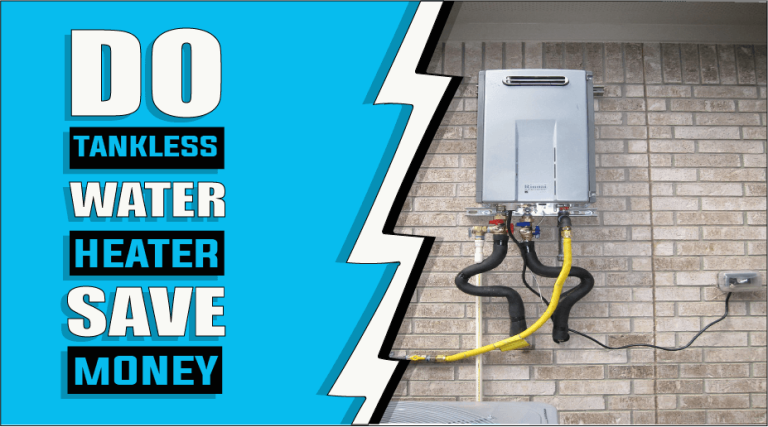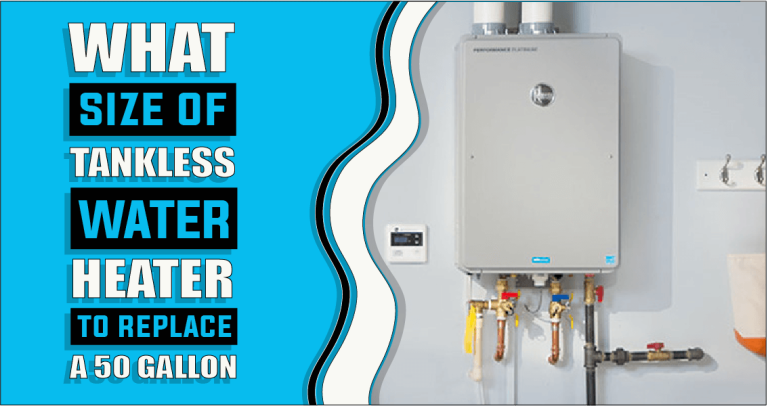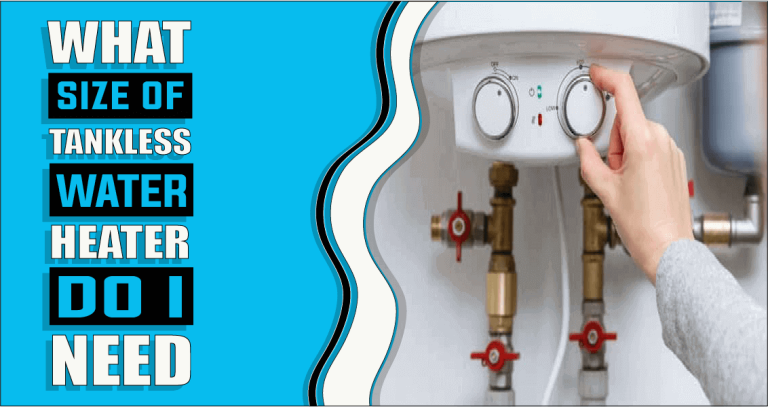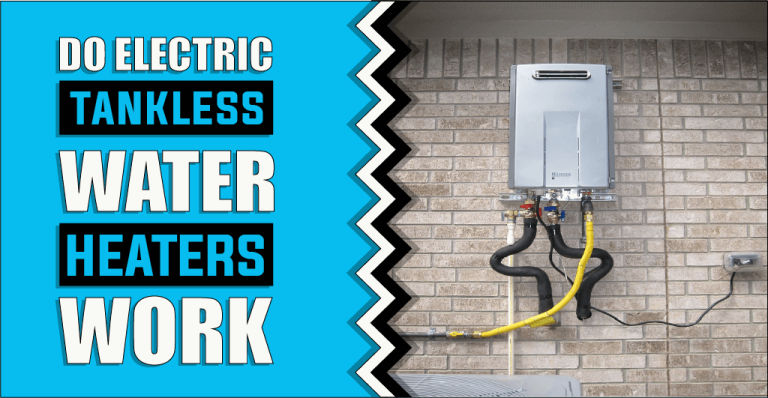Why Does My Tankless Hot Water Heater Go Cold – The Truth Reveals
As a tankless water heater user, you’ve surely experienced frustration when your shower goes from steamy to icy cold in an instant. You might think this means there’s something wrong with the heater, but that’s likely not the case. When it comes to tankless water heaters, running out of hot water can be really common and surprisingly easy to fit, if you know what to do! In this blog post, we’ll explain why my tankless water heater goes cold and what simple steps you can take at home to get back up and running again. Get ready for takes great showers without any sudden temperature changes!
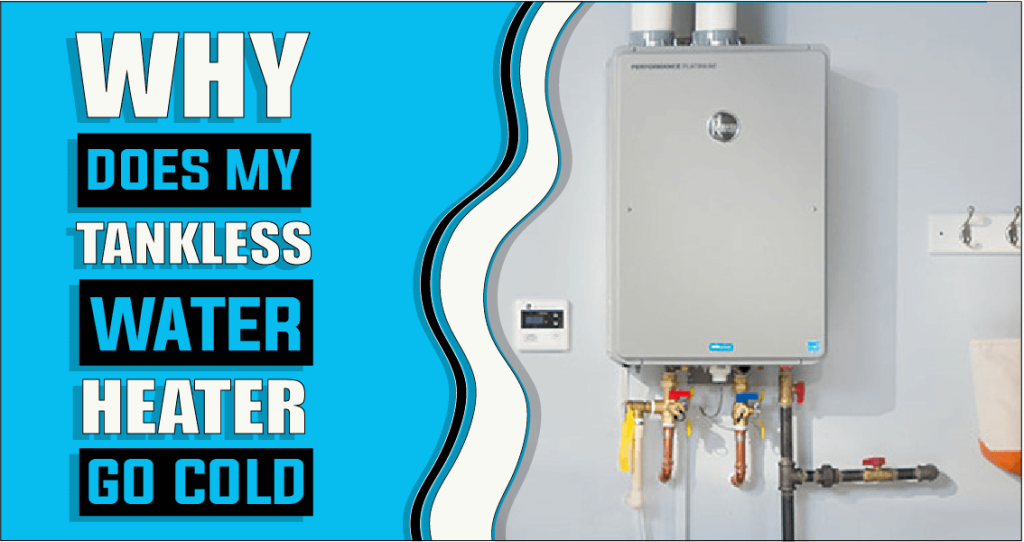
Let’s discuss why my tankless water heater goes cold
A tankless water heater is an effective and efficient way to provide instant hot water for any home. Unlike conventional storage tank systems, which heat and store large quantities of water in a single tank, tankless systems can heat the water as it moves through your pipes, providing an endless supply of hot water that never goes cold. This makes them more energy-efficient than traditional systems since they don’t need to use extra energy to keep the water warm.
Additionally, they can heat larger amounts of water quickly so you can have enough hot water for multiple fixtures at the same time. Tankless models are also much smaller and more compact than traditional systems, which means they take up less space and make installation easier.
A water heater going cold can be a common and inconvenient occurrence, especially for those who rely on having access to hot water for everyday tasks such as washing dishes, taking showers, and doing laundry. The primary reason why a tankless water heater might go cold is due to decreased water pressure in the home’s pipes. This could be caused by an obstruction in the plumbing lines or a broken valve that reduces the amount of incoming water. It could also be caused by an inadequate flow of gas supply if the tankless water heater is powered by natural gas or propane. If there is not enough fuel being delivered to the unit, it may not have sufficient heat output to keep up with demand.
Overall, it is important to consult with a professional if you experience any problems with your tankless water heater so that these issues can be properly diagnosed and remedied as soon as possible.
Potential Causes for a Tankless Hot Water Heater Going Cold
There are several possible reasons why a tankless water heater might turn cold. From low gas pressure to an inadequate flow rate of incoming water, the culprits can be difficult to detect and diagnose but hopefully not too hard for your handy self-fixing skills!
1: Plumbing System Crossover
One potential cause of a tankless water heater going cold is a plumbing system crossover. This occurs when the hot and cold water lines get crossed and the hot water is sent through the cold line or vice versa.
Quick Fix:
The solution for this issue is to flush out the water lines and piping to ensure that all of the pipes are properly directed. Additionally, it may be necessary to install backflow preventers to avoid a recurrence of this issue.
2: Low Water Pressure
Another potential cause for a tankless water heater going cold is low water pressure. This can be caused by various things such as an undersized pressure regulator, an obstruction in the pipes that reduce the flow rate, or insufficient incoming pressure from the municipal water supply.
Quick Fix:
To fix this problem, it’s important to increase the incoming pressure by adjusting the regulator or installing additional equipment such as a booster pump if necessary.
3: Blocked Heat Exchanger
A blocked heat exchanger can be a problem with tankless water heaters that causes them to go cold. This occurs when sediment accumulates in or around the heat exchanger, preventing proper heating of incoming water.
Quick Fix:
The solution is to flush out these passages with vinegar or another descaling agent regularly so that there isn’t any buildup causing problems with heating efficiency and effectiveness.
4: Undersized Tankless Unit
An undersized tankless unit could also cause your tankless water heater to go cold due to its inability to keep up with demand when more than one appliance like a dishwasher and washing machine is used at once. This results in more hot water being demanded than what your unit can provide at once without dropping temperatures significantly over time throughout your showering session.
Recommended Solution:
It’s recommended that you make sure you select a size of tankless unit appropriate for your household’s needs based on factors such as the number of users or appliances as well as estimated peak hour usage demands; this should help ensure you don’t experience temperature drops even under heavy load conditions!
5: Incorrect Gas Line Size
One more cause of the tankless water heaters going cold is an incorrect gas line size. If the gas line into the tankless water heater is too small, it could cause insufficient fuel to be supplied to the burner, which would lead to insufficient heating of the incoming water.
Quick Fix:
To fix this issue, you would need to check that your gas line size is adequate for your tankless water heater and replace it with a larger size pipe if necessary. Additionally, you should ensure that all connections are tight and secure.
6: Clogged Water Filter
A clogged water filter also causes the tankless unit to go frosty. This could occur if the filter gets blocked with sediment or other debris, restricting the flow of water.
Quick Fix:
To resolve this issue, you would need to inspect the filter and clean or replace it as necessary. You should also check for any blockages in other areas such as air intakes or exhaust ports which could reduce efficiency.
7: Multiple Taps Opened At Once
When multiple taps are opened at once on a tankless water heater, it can restrict the flow of hot water due to increased demand. This can result in lukewarm or even cold temperatures if not enough heat is being produced by the unit.
How to Fix:
Installing an insulated recirculation loop may help reduce wait times between taps being opened by providing instant access to hot water.
8: Sediment Buildup
A common problem with tankless water heaters is sediment buildup inside the unit over time due to hard minerals present in most tap waters. This can clog up filters and pipes leading into and out of the unit, leading to reduced efficiency and ultimately colder temperatures coming out of your taps or showerheads.
Quick Fix:
To fix this issue, you should flush out your system periodically using vinegar or citric acid solutions and check all internal components for any signs of build-up which may need replacing if found significant enough. It may also be worth investing in a whole-house filter system which will help reduce sediment entering your tankless water heater from external sources such as city main supplies.
9: Cold Water Sandwich
A cold-water sandwich occurs when there is an inflow of cold liquid between two consecutive heated batches of liquid within a single instant-on cycle within a tankless hot water heating system due to temperature changes over time. This situation can lead to intermittent bursts of coldness in otherwise heated outputs like showers or sinks.
Quick Fix:
It can be prevented by making sure that no more than one instant-on cycle takes place at once even across multiple faucets so that no cold “sandwich” can take form between consecutive cycles
Solutions to Fix a Tankless Water Heater that is Going Cold
Get hot water fast! Learn tricks for fixing your tankless water heater that has gone cold, so you can quickly get back to enjoying warm showers.
1: Increasing the Temperature Setting
One of the common solutions to a tankless water heater that is going cold is to increase the temperature setting. This can be done by increasing the temperature on the thermostat dial or a digital display if your model has one. If you are unsure how to do this, consult your owner’s manual for further instructions.
Sometimes when tankless water heaters are initially installed, the temperature settings may be adjusted automatically or manually and set too low. For this reason, it is important to check the settings first before attempting to troubleshoot any other issue.
2: Checking for Leaks
If increasing the temperature does not solve the issue, you may leak somewhere in your system which could be causing loss of hot water. You should check all connections on both supply lines as well as the outflow from the tankless unit itself for any signs of leaking or dripping water.
In an attempt to identify any leaks, it may also be beneficial to slowly shut off each connection one at a time while running hot water at a sink nearby. If you notice an abrupt drop in pressure after shutting off one of these connections, then it could indicate there is a leak present and will require further investigation.
3: Repairing Damaged Parts
Additionally, if the unit continues to go cold despite these solutions being attempted, then there may be an issue with its components such as a damaged thermister or dip tube. If this is the case, then it would be necessary to replace these parts for the tankless water heater to work properly again.
4: Ensure Proper Ventilation
Another potential cause of a tankless water heater going cold is insufficient ventilation in its location due to inadequate airflow or blockage preventing fresh air from entering its environment. To ensure proper ventilation and prevent this problem, it’s important to make sure there are no obstructions blocking intake vents or exhaust flues located near or around your tankless unit.
Furthermore, observe any manufacturer’s specifications regarding minimum clearances from combustible materials such as wall studs and joists when installing vent pipes in unconditioned spaces like attics or basements.
Maintaining Regular Maintenance & Cleaning
Keeping your tankless water heater running efficiently and providing you with hot water requires regular maintenance and cleaning. It is important to inspect the unit regularly for any signs of scale or sediment build-up, as this can result in a decrease in performance and efficiency, leading to cold water.
In addition, it is important to check the filter every once in a while as clogs or blockages can lead to decreased performance. It is recommended that the filter be changed at least once per year or more often depending on the hardness of your water supply.
Finally, you must flush the system regularly to remove dirt, debris, and sediment that has accumulated in the unit over time.
Knowing When To Contact A Professional Technician
Although tankless water heaters are highly efficient devices, they do require professional servicing from time to time. If your tankless water heater is consistently giving off cold water despite all of your efforts at maintenance and cleaning, then it may be time to hire a qualified technician. A professional technician can diagnose issues such as insufficient gas supply, faulty wiring connections, problems with burners or heat exchangers, and other mechanical issues that could be preventing your unit from operating correctly.
Frequently Asked Questions
There are many potential causes of a tankless water heater not staying hot, including insufficient gas supply, faulty wiring connections, problems with burners or heat exchangers, and sediment build-up. It is important to check the settings first before attempting to troubleshoot any other issue.
Tankless water heaters may go cold due to insufficient ventilation, a clogged filter, sediment build-up, damaged parts, or simply not enough hot water being produced. It is important to inspect the unit regularly for any signs of damage or blockage and to make sure there are no obstructions blocking intake vents or exhaust flues located near or around the unit.
The water in a tankless water heater can go from hot to cold if the unit is not able to produce enough hot water. It is important to check the settings and make sure it is set to the correct temperature before inspecting any other issue.
The typical lifespan of a tankless water heater is 10 to 20 years, depending on how well it is maintained and how efficiently it operates. Regular maintenance and cleaning are essential to ensure the unit performs at its best and lasts as long as possible.
The optimal temperature to set a tankless water heater at is between 110 and 120 degrees Fahrenheit. It is important to set the temperature lower if there are young children in the house, as scalding can occur at higher temperatures.
Conclusion
We hope you found this article helpful in determining why does my tankless water heater go cold. Tankless water heaters are highly efficient devices, however, they can go cold due to some issues. These include insufficient gas supply, faulty wiring connections, problems with burners or heat exchangers, and sediment build-up. Additionally, insufficient ventilation, a clogged filter, or not enough hot water being produced can cause the tankless water heater to go cold. Regular maintenance and cleaning are essential for ensuring that your tankless water heater runs efficiently and provides you with hot water when needed. If your unit is consistently producing cold water despite all of your efforts at maintenance and cleaning, then it may be time to contact a qualified technician to diagnose any deeper mechanical issues that could be causing the problem.
Ella John is passionate about helping her readers make the best choice when purchasing a heater. She understands that selecting a heater can be difficult and strives to provide information to help make the decision easier. Ella’s website, Heatersinfo.com, provides valuable insight into heating trends and types of heaters and tips on how to care for them. She also advises selecting the right heater based on individual needs and preferences. Her expertise in electronics makes her an excellent source of knowledge, and she is confident that anyone who visits her website will find the perfect heater information for their needs. Ella’s dedication to helping others make educated decisions about buying the right heater is unparalleled, and she hopes to continue offering her expertise for many years. With Ella’s help, finding the perfect heater can be a breeze!


